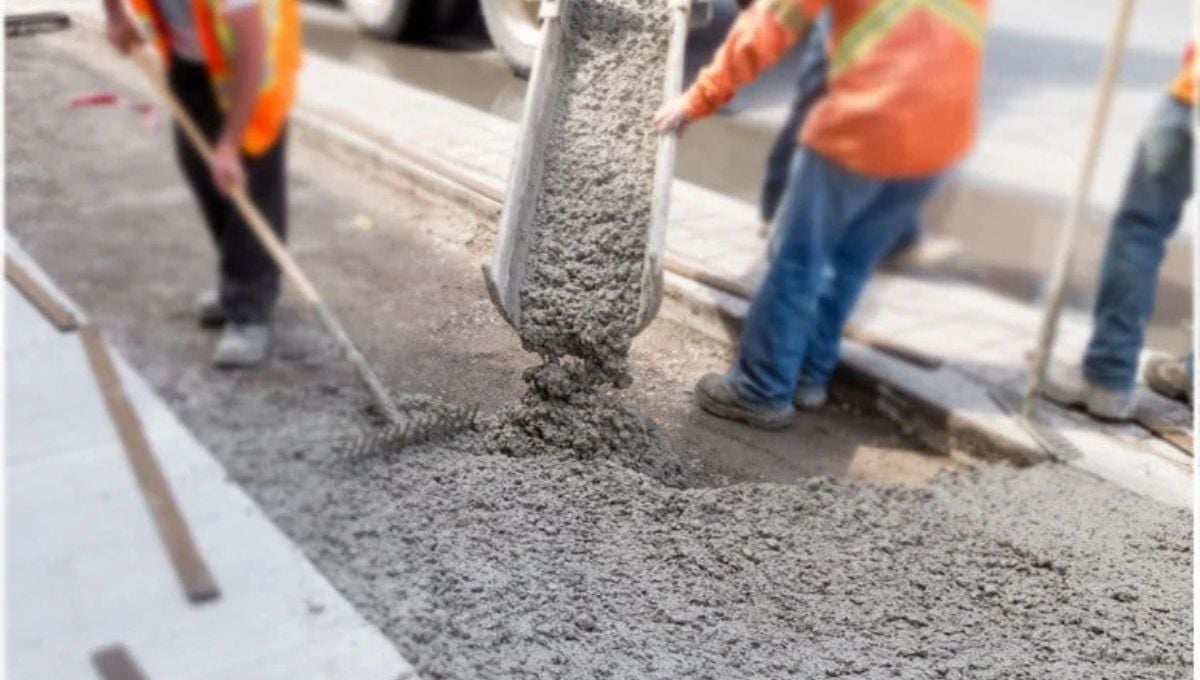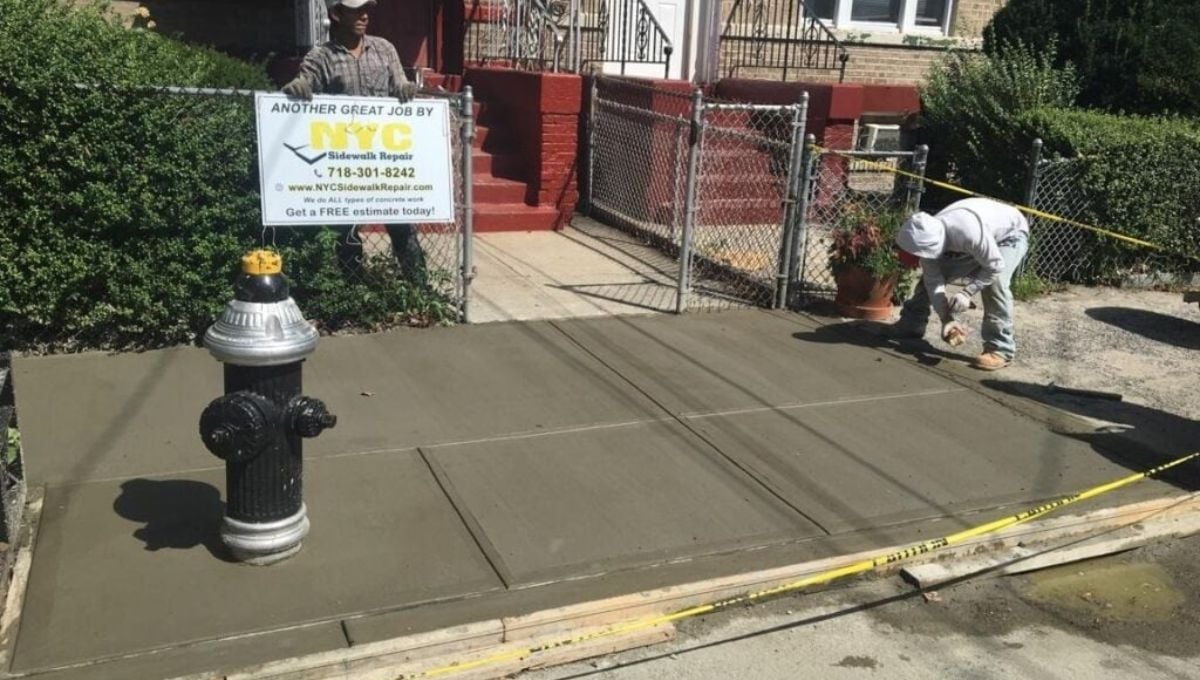New York City property owners face unique challenges when maintaining their concrete infrastructure. Between harsh winter conditions, constant traffic, and aging urban systems, concrete curbs take a significant beating throughout the year. What many property owners don’t realize is that seemingly minor curb damage can quickly escalate into major structural issues that threaten both their property value and financial stability.
Concrete curb repair isn’t just about aesthetics—it’s a critical investment in your property’s long-term health. Small cracks and chips that appear insignificant today can become gateways for water damage, foundation issues, and costly emergency repairs tomorrow. Understanding the importance of proactive maintenance can save NYC property owners substantial money while protecting their most valuable assets.
The bustling streets of Manhattan, Brooklyn, Queens, the Bronx, and Staten Island create constant wear on concrete surfaces. From delivery trucks making tight turns to the freeze-thaw cycle that defines New York winters, curbs endure relentless stress. Property owners who recognize early warning signs and act quickly often spend a fraction of what those who wait until major damage occurs must invest in repairs.

Understanding the Causes of Curb Damage
NYC’s concrete curbs face numerous threats that can compromise their structural integrity. Weather conditions play a primary role, with winter freeze-thaw cycles causing water to expand within small cracks, gradually widening them into significant structural problems. Snow plows and salt trucks add additional stress, scraping and chemically attacking concrete surfaces throughout the winter months.
Vehicle impact represents another major cause of concrete sidewalk crack repair needs. Delivery trucks, garbage trucks, and even passenger vehicles regularly strike curbs during parking maneuvers or tight turns. These impacts create immediate visible damage but also internal stress fractures that may not become apparent until weeks or months later.
Tree root growth poses a particularly challenging threat to urban concrete infrastructure. As trees mature, their expanding root systems can lift, crack, and destroy concrete curbs from below. This type of damage often appears gradually but can suddenly worsen during periods of rapid tree growth or after significant rainfall.
Construction activities in the vicinity can also compromise curb integrity through vibrations, heavy machinery contact, and changes to drainage patterns. Even seemingly unrelated work like utility installations or building renovations can affect nearby concrete structures through ground movement and altered water flow patterns.
Why Timely Repairs are Essential
The window of opportunity for cost-effective concrete curb repair is surprisingly narrow. Small cracks that could be sealed with simple materials today may require complete section replacement within a single winter season if left untreated. Understanding this timeline helps property owners make informed decisions about maintenance investments.
Water infiltration through damaged concrete creates the most serious long-term problems. Once water penetrates concrete, it can reach the underlying foundation, causing erosion, settling, and structural instability. During the winter months, this water freezes and expands, accelerating damage exponentially. The National Weather Service reports that NYC experiences an average of 25 freeze-thaw cycles per winter, each one potentially worsening existing concrete damage.
Liability concerns make timely repairs even more critical for property owners. Damaged curbs create tripping hazards and can cause vehicle damage, leading to potential lawsuits and insurance claims. NYC’s strict liability laws hold property owners responsible for maintaining safe conditions on their property boundaries, including curb areas.
Property values directly correlate with curb appeal and infrastructure condition. Real estate professionals consistently report that properties with well-maintained concrete features command higher prices and sell more quickly than those with visible damage. The investment in timely repairs often returns multiples of its cost through preserved property value.
Code compliance issues can arise when curb damage affects accessibility requirements or creates safety hazards. The Americans with Disabilities Act Accessibility Guidelines mandate specific standards for curb cuts and pedestrian access areas. Damaged concrete that impedes accessibility can result in citations, fines, and mandatory expensive corrections.
The Costly Consequences of Neglecting Curb Damage
Delaying concrete curb repair typically transforms manageable maintenance into major reconstruction projects. What begins as a small crack requiring minimal patching can evolve into complete curb replacement costing ten times the original repair estimate. This cost escalation follows predictable patterns that experienced contractors witness repeatedly.
Foundation damage represents the most expensive consequence of neglected curb repairs. Water infiltration through damaged concrete can undermine building foundations, requiring extensive excavation, waterproofing, and structural reinforcement. These repairs often cost tens of thousands of dollars and require significant disruption to property use.
The concrete curb replacement cost multiplies when damage spreads to adjacent infrastructure. Neglected curb problems often affect sidewalks, driveways, and landscaping features, creating comprehensive repair projects that require multiple specialized contractors and extended construction timelines.
Insurance complications can arise when preventable damage is allowed to worsen. Many property insurance policies exclude coverage for damage resulting from deferred maintenance, leaving property owners personally responsible for expensive repairs that could have been covered if addressed promptly.
How to Identify Curb Damage Early
Successful early detection of concrete problems requires systematic inspection and understanding of warning signs. Property owners who conduct regular assessments can identify issues before they require expensive interventions, saving substantial money over time.
Visual inspection should focus on crack patterns, surface texture changes, and alignment issues. Hairline cracks running parallel to the curb length often indicate settling or thermal stress, while perpendicular cracks suggest impact damage or root intrusion. Spalling, where concrete surface layers flake away, indicates more serious structural problems requiring immediate attention.
Water accumulation patterns provide crucial clues about concrete integrity. Pooling water along curb lines suggests drainage problems that can accelerate damage, while water stains on concrete surfaces may indicate internal cracking, allowing moisture penetration. These signs warrant immediate professional evaluation to prevent costly deterioration.
Seasonal changes often reveal damage that wasn’t visible during other times of the year. Spring thaws frequently expose winter damage, while summer heat can cause expansion-related cracking. Fall inspections help identify problems before winter weather can worsen them significantly.
The Concrete Curb Repair Process
Understanding the repair of broken concrete curb process helps property owners make informed decisions about contractors and project timelines. Professional repairs follow established procedures designed to ensure durability and code compliance.
Initial assessment involves determining damage extent, the underlying causes, and the appropriate repair methods. Surface cracks may require simple sealing, while structural damage necessitates partial or complete replacement. This evaluation phase critically influences project cost and duration.
Site preparation includes marking utilities, obtaining necessary permits, and establishing safe work zones. NYC’s dense infrastructure requires careful coordination to avoid damaging underground utilities or disrupting traffic flow. Professional contractors handle these logistics to prevent costly complications.
Removal and disposal of damaged concrete must comply with NYC waste management regulations. Proper disposal prevents environmental violations and potential fines, while also ensuring clean work sites for new concrete installation.
Choosing the Right Concrete Repair Company in NYC
Selecting qualified contractors significantly impacts repair quality and long-term success. NYC’s competitive construction market includes many options, but not all contractors possess the specialized experience necessary for durable urban concrete repairs.
Licensing and insurance verification protect property owners from liability and ensure contractor competency. NYC requires specific licenses for concrete work, while comprehensive insurance coverage protects against accidents and workmanship issues.
Experience with NYC-specific challenges distinguishes qualified contractors from general construction companies. Urban concrete repair requires an understanding of local soil conditions, climate factors, and regulatory requirements that affect project success.
References and portfolio reviews provide insight into contractor reliability and quality standards. Successful NYC concrete contractors can demonstrate consistent results across diverse property types and challenging installation conditions.
DIY vs. Professional Curb Repair: Which is Right for You?
The decision between do-it-yourself and professional concrete sidewalk crack repair depends on damage extent, skill level, and long-term objectives. Understanding the capabilities and limitations of each approach helps property owners make appropriate choices.
DIY repairs work best for minor surface cracks and cosmetic issues that don’t affect structural integrity. Simple crack sealing and surface patching can be accomplished with basic tools and materials available at hardware stores. However, these repairs typically provide temporary solutions rather than permanent fixes.
Professional repairs become necessary when damage affects structural integrity, involves utility lines, or requires permits. NYC’s building codes mandate professional installation for many concrete repairs, making DIY approaches potentially illegal for significant projects.
Cost considerations extend beyond immediate material expenses. While DIY repairs appear less expensive initially, inadequate repairs often require professional correction within short timeframes, ultimately costing more than hiring qualified contractors originally.

Preventative Measures to Extend Curb Life
Proactive maintenance strategies significantly extend concrete curb service life while reducing repair frequency and costs. Property owners who implement comprehensive maintenance programs enjoy substantial long-term savings compared to reactive repair approaches.
Regular cleaning removes debris, salt, and chemicals that accelerate concrete deterioration. Pressure washing and debris removal prevent damage accumulation while maintaining an attractive appearance that supports property values.
Sealant application protects concrete surfaces from water infiltration and chemical exposure. Professional-grade sealants provide multi-year protection when applied correctly, representing cost-effective damage prevention strategies.
Drainage management prevents water accumulation that accelerates concrete damage. Proper grading, functional gutters, and strategic landscaping direct water away from concrete structures, reducing freeze-thaw damage and erosion problems.
Protecting Your Property Through Proactive Curb Maintenance
Concrete curb repair represents one of the most cost-effective investments NYC property owners can make in their infrastructure. The financial benefits of timely maintenance far exceed the costs, while also reducing stress, liability, and unexpected emergencies that disrupt business and personal life.
Successful property maintenance requires understanding that small problems become expensive disasters when ignored. NYC’s harsh urban environment accelerates concrete deterioration, making early intervention more critical than in less demanding climates. Property owners who recognize this reality and act accordingly protect both their financial investments and daily operations.
For NYC property owners seeking expert concrete curb repair services, NYC Sidewalk Repair offers comprehensive solutions backed by extensive local experience and commitment to quality workmanship. Their team understands the unique challenges of urban concrete maintenance and provides reliable, cost-effective solutions that protect property investments for years to come.
